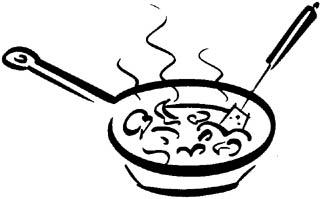
SERVES 4 AS A LIGHT MAIN COURSE, 6 AS PART OF A MULTICOURSE MEAL
This is a straightforward and very simple way to cook a duck breast. It is the first step to a salad, stir-fry, soup, or casserole that features intriguingly seasoned slices of rare or medium-rare duck meat.
For a dish involving further cooking—such as a sandpot or soup—you’ll want to leave the breasts blood-rare as they come from the searing pan in order to give them room to cook further. For eating at room temperature, as in a salad or an antipasto, complete the cooking in the oven so the breast is medium-rare when sliced.
This is also a wonderful way to cook goose or squab breasts. (Squab breasts are so small, you’ll want to cut the marination time to 15 minutes.) I cooked goose breasts this way for one Christmas feast, and the guests are still raving.

The skin that ideally is left on the breast shields and bastes the meat during marination and cooking and gives it a wonderful plushness in hot dishes. If your butcher or conscience has removed the skin, cut the marination time in half, be especially attentive in the cooking, and expect the meat to be a bit drier in the end.
2 whole, boneless fresh duck breasts with skin on, cut in half (4 pieces)
MARINADE:
¼ cup soy sauce
2 tablespoons mushroom soy sauce
¼ cup Chinese rice wine or dry sherry
1 tablespoon China Moon Chili-Orange Oil (page 15)
1 tablespoon sugar
1 whole scallion, cut into 1-inch nuggets and smashed
4 quarter-size coins fresh ginger, smashed
1 tablespoon finely slivered coriander leaves and stems
2 to 4 teaspoons corn or peanut oil, for searing
1. Neatly trim the borders of the duck breasts, removing the fillets, excess fat, and cartilage; reserve the fillets for another use.
2. In a bowl, mix together the marinade ingredients through the coriander. Add the duck breasts and turn to coat thoroughly. Set aside to marinate at room temperature for 1 hour. Drain the marinade and discard the solids.
3. Preheat the oven to 400°F. Move a rack to the upper-third.
4. Heat a large, heavy skillet over high heat until hot enough to evaporate a bead of water on contact. Add 2 teaspoons of the oil and swirl to glaze the bottom. When the oil is nearly smoking, add the duck breasts, skin side down, in a single layer and cook until the skin browns, about 2 minutes. Turn and brown the second side, 1 minute more. The duck should be golden brown on the outside and still raw inside. If the skillet is not large enough to hold all of the breast pieces at once, clean it well before searing the next batch. Drain the breasts, skin side down, on paper towels.
5. Place the breasts, skin side up, on a baking sheet and roast in the oven until medium-rare, 3 to 4 minutes. Test for doneness by inserting a knife point at the thickest portion.
6. Serve the breasts sliced thinly across the grain into rosy ribbons. They are delicious eaten immediately, tepid, or at room temperature.
MENU SUGGESTIONS: Ribbons of duck breast left blood-rare after searing are delicious folded into the sandpots on page 172 and 176 as replacements for the duck confit or duck legs. Simply bring the sandpots to a near boil, remove the pot from the heat, fold the ribbons into the sauce, and replace the lid for a minute or two to allow the meat to cook through.
Slivers of the partly cooked meat are wonderful in any of our hot and sour soups, again folded into the hot liquid just before serving.
When roasted to medium-rare, the breasts are delicious simply tossed with salad greens and any of our vinaigrettes, or added to a Paris Salad (page 444).
